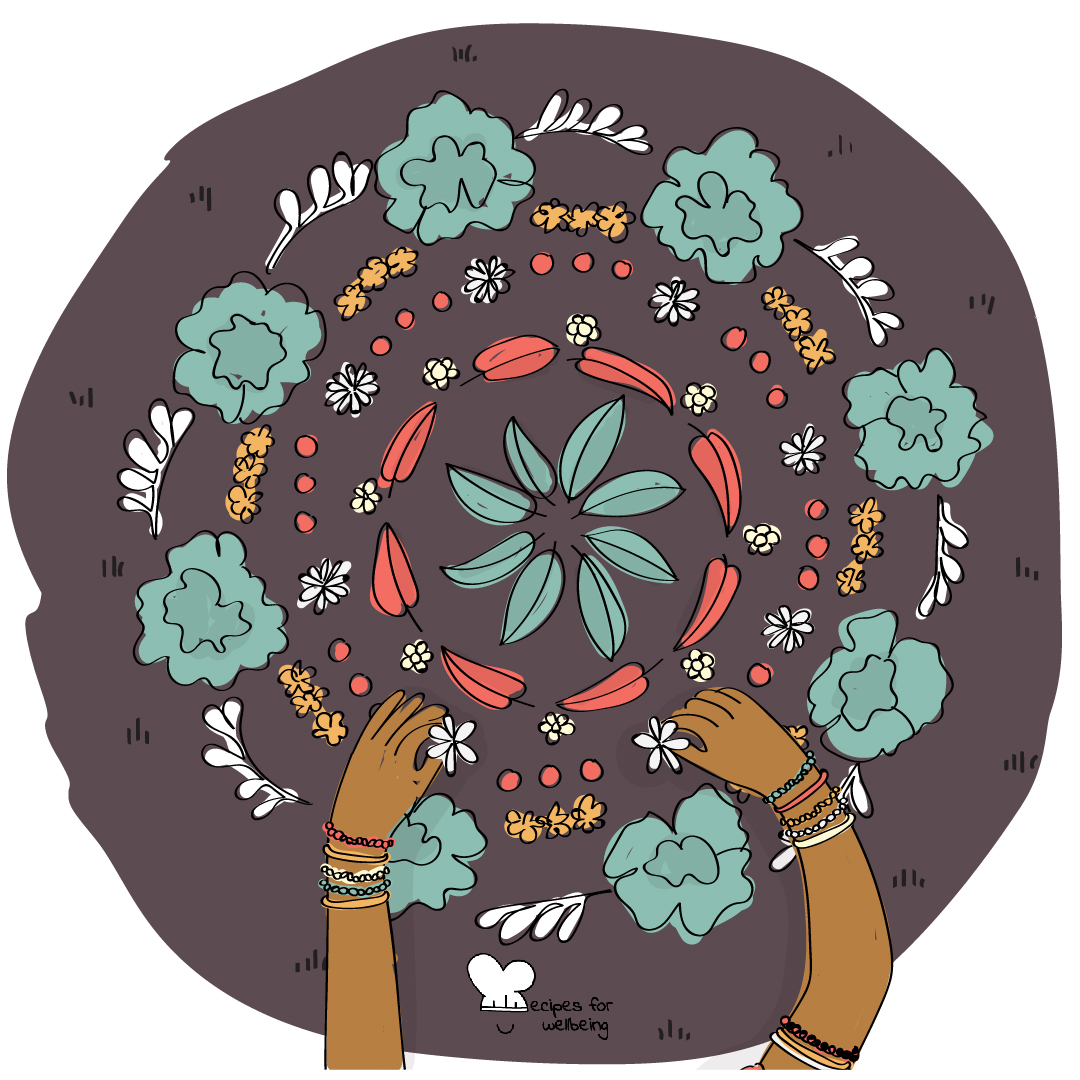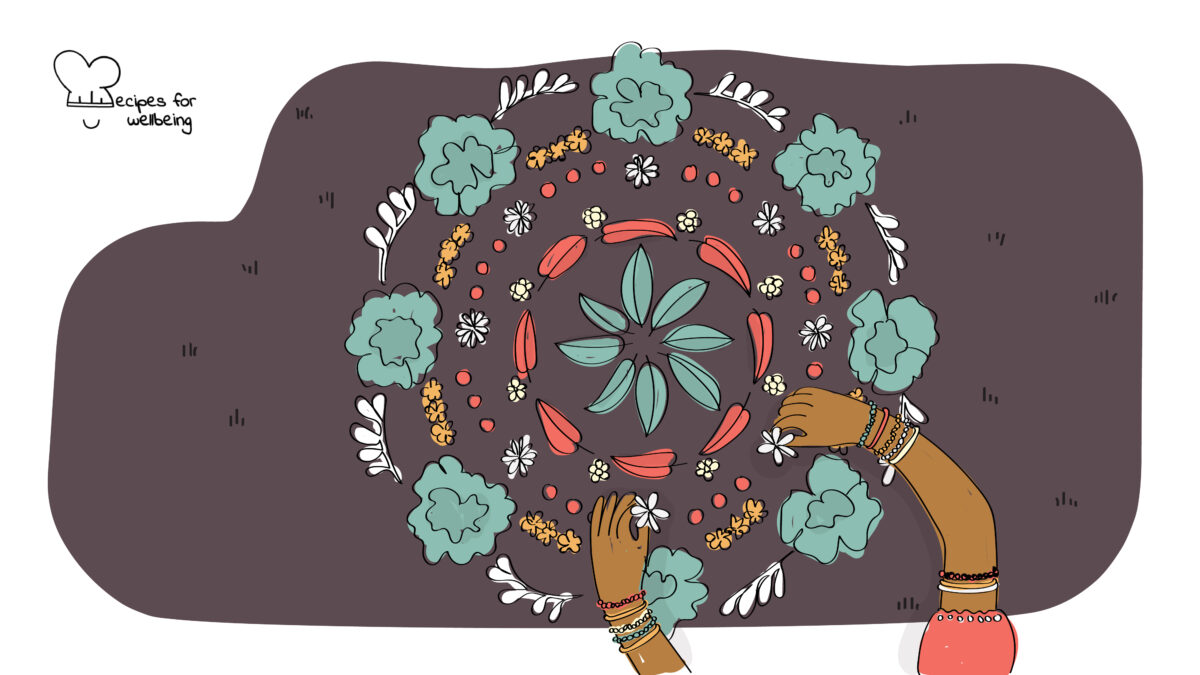
Nature Altar
We should learn to see everyday life as mandala – the luminous fringes of experience which radiate spontaneously from the empty nature of our being. The aspects of our mandala are the day-to-day objects of our life experience moving in the dance or play of the universe. ―Dilgo Khyentse Rinpoche
👥 Serves: 11-25 people
🎚 Difficulty: Easy
⏳ Total time: 61-120 minutes
🥣 Ingredients: Paint, brushes, water, blank masks, chairs, flowers, music
🤓 Wholebeing Domains: Awareness, Bioempathy, Positive Emotion, Ritualising
💪 Wholebeing Skills: Contemplation, Gratitude, Letting go, Nature kinship, Non-attachment, Ritualising, Serenity

Nature Altar
📝 Description
Reconnecting to the sacred through altar-making.
Spiritual ecology practices remind us of our deep connections to each other, life, and the Earth, and they invite a return of meaning to our desecrated world. Simple, daily practices allow us to reconnect to the sacred in everyday life, transforming our relationship with the Earth. Whether that’s walking, gardening, or altar making.
All around us are altars waiting to be created. Altar making is the process of re-envisioning the materials in the world around us as sacred objects. Whereas traditional altars have an air of untouchable sanctity, the art of altar making arranges elements in your environment so that they become the entry-point into a contemplative experience, activating a remembrance of reverence for yourself, the earth, the cycles of life and the elements. The following recipe guides you through the steps to create a Nature altar in a group setting.
👣 Steps
Step 1 – Preparation (5’)
Gather your participants and introduce them to a few guiding principles around altar making and ethical harvesting:
- Be mindful not to disturb any living ecosystems.
- Harvest only what has already fallen to the earth, rather than picking something from a plant/tree.
- Practise gentleness and mindfulness.
- You may choose to also harvest human litter/waste.
Step 2 – Altar making (30’)
Invite participants to spend some time to create a mandala that reflects their connection with the natural world.
Step 3 – Share stories (30’)
Gather your participants back and invite each of them to share a short story about their connecting with Nature, using the altar they created. Invite them to share what the altar represents to them. Depending on the size of your group, you may wish to split into sub-groups to ensure everyone has the opportunity to share.
Step 4 – Notice (10’)
After the story sharing is done, open a short sharing round for participants to reflect on what they noticed about the landscape, species, or environment around them.
Step 5 – Leave behind
If appropriate to do so, leave the altars where they are. Invite your participants to practise impermanence in the natural world; letting go of attachment.

